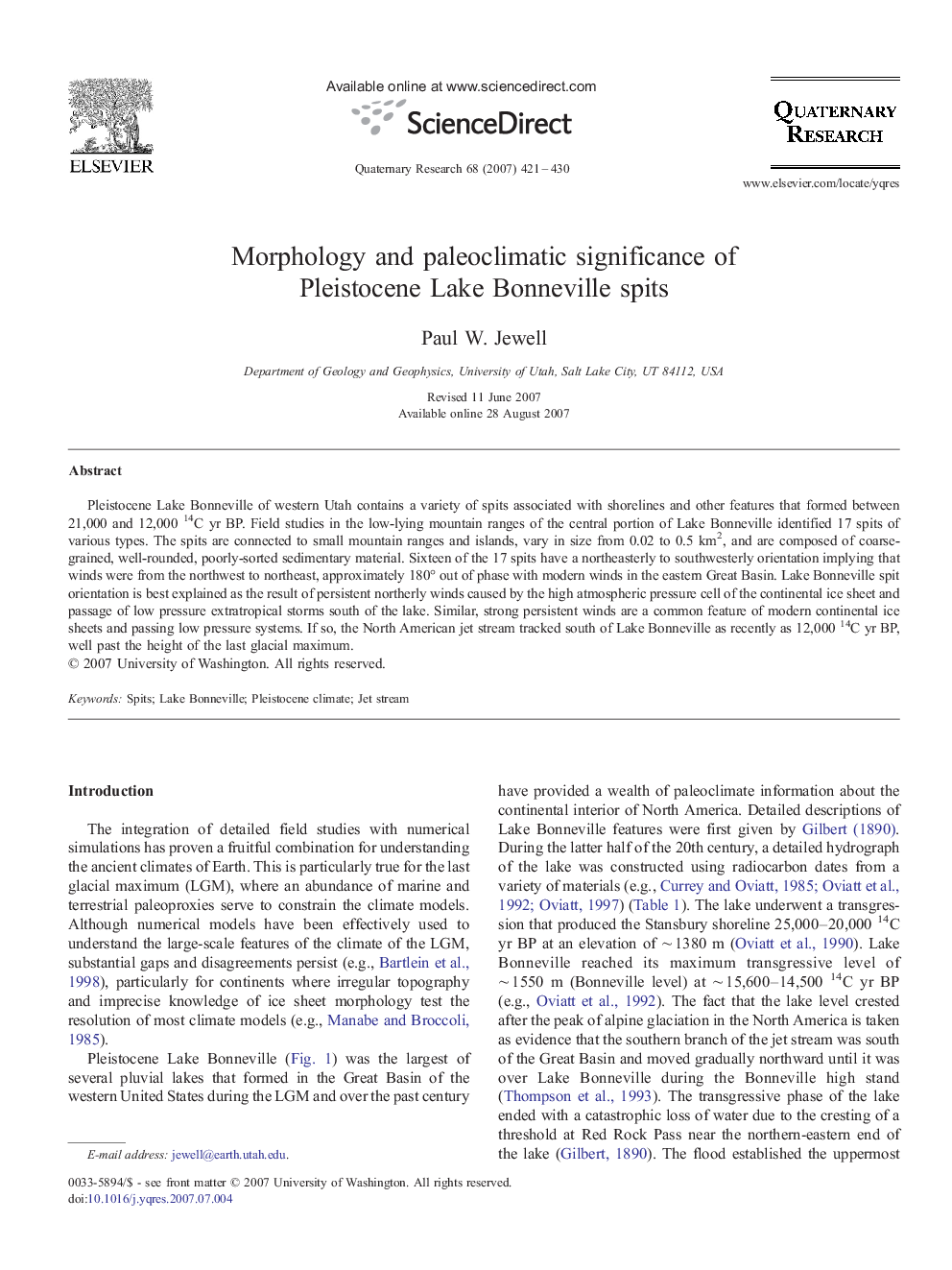| کد مقاله | کد نشریه | سال انتشار | مقاله انگلیسی | نسخه تمام متن |
|---|---|---|---|---|
| 1046062 | 944856 | 2007 | 10 صفحه PDF | دانلود رایگان |
عنوان انگلیسی مقاله ISI
Morphology and paleoclimatic significance of Pleistocene Lake Bonneville spits
دانلود مقاله + سفارش ترجمه
دانلود مقاله ISI انگلیسی
رایگان برای ایرانیان
کلمات کلیدی
موضوعات مرتبط
مهندسی و علوم پایه
علوم زمین و سیارات
زمین شناسی
پیش نمایش صفحه اول مقاله

چکیده انگلیسی
Pleistocene Lake Bonneville of western Utah contains a variety of spits associated with shorelines and other features that formed between 21,000 and 12,000 14C yr BP. Field studies in the low-lying mountain ranges of the central portion of Lake Bonneville identified 17 spits of various types. The spits are connected to small mountain ranges and islands, vary in size from 0.02 to 0.5 km2, and are composed of coarse-grained, well-rounded, poorly-sorted sedimentary material. Sixteen of the 17 spits have a northeasterly to southwesterly orientation implying that winds were from the northwest to northeast, approximately 180° out of phase with modern winds in the eastern Great Basin. Lake Bonneville spit orientation is best explained as the result of persistent northerly winds caused by the high atmospheric pressure cell of the continental ice sheet and passage of low pressure extratropical storms south of the lake. Similar, strong persistent winds are a common feature of modern continental ice sheets and passing low pressure systems. If so, the North American jet stream tracked south of Lake Bonneville as recently as 12,000 14C yr BP, well past the height of the last glacial maximum.
ناشر
Database: Elsevier - ScienceDirect (ساینس دایرکت)
Journal: Quaternary Research - Volume 68, Issue 3, November 2007, Pages 421-430
Journal: Quaternary Research - Volume 68, Issue 3, November 2007, Pages 421-430
نویسندگان
Paul W. Jewell,